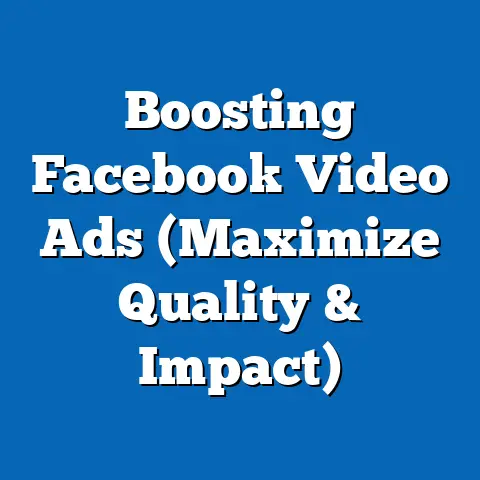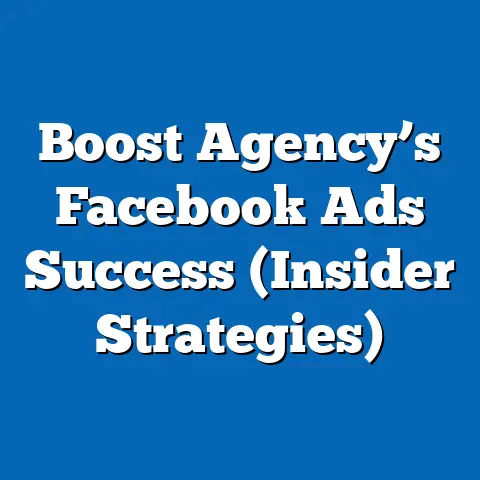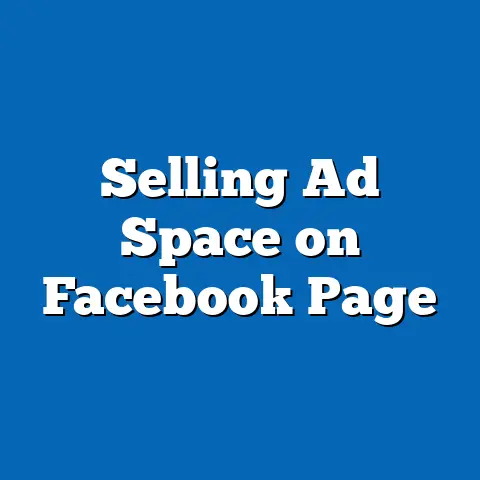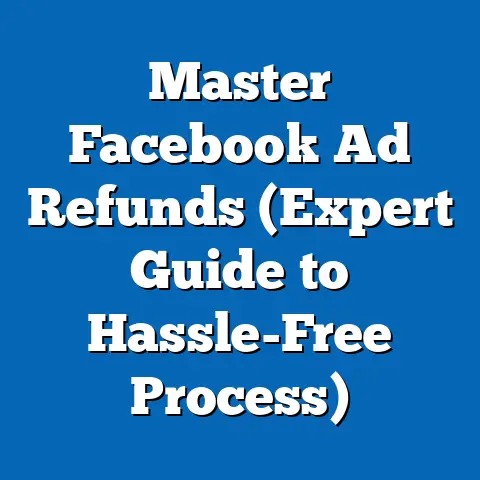Why Are Facebook Ads So Expensive? (Unlocking Hidden Costs)
Facebook ads have become a cornerstone of modern marketing, a digital town square where businesses, big and small, can connect with billions of potential customers. I’ve seen firsthand how a well-crafted Facebook ad campaign can transform a struggling business into a thriving one. However, the path to success isn’t always paved with gold. One question I often hear from clients is: “Why are Facebook ads so expensive?” It’s a valid concern, and understanding the financial implications is crucial for achieving a positive return on investment (ROI).
Think of Facebook ads like a valuable piece of real estate. The more desirable the location (your target audience), the higher the price. And just like any investment, the perceived value of Facebook ads directly impacts how much you’re willing to spend. If you believe your ads will generate significant leads and sales, you’re more likely to allocate a larger budget. But if you’re unsure or lack the knowledge to optimize your campaigns, the cost can seem exorbitant.
Section 1: The Basics of Facebook Advertising Costs
Before diving into the complexities, let’s establish a foundation by understanding the core metrics that determine the cost of Facebook ads. These metrics are the language of Facebook advertising, and mastering them is essential for effective campaign management.
- Cost Per Click (CPC): This is the amount you pay each time someone clicks on your ad. It’s a straightforward metric that reflects the cost of driving traffic to your website or landing page. Imagine you’re running an ad promoting a new product. If your CPC is $1, you’ll pay $1 every time someone clicks on that ad to learn more about your product.
- Cost Per Mille (CPM): “Mille” is Latin for thousand, so CPM represents the cost you pay for every 1,000 impressions your ad receives. An “impression” simply means that your ad was displayed to someone, regardless of whether they clicked on it or not. CPM is particularly relevant for brand awareness campaigns, where the goal is to get your message in front of as many people as possible. For example, if your CPM is $10, you’ll pay $10 for every 1,000 times your ad is shown.
- Cost Per Action (CPA): This metric measures the cost of achieving a specific action, such as a purchase, a lead generation form submission, or an app install. CPA is the most direct way to measure the cost of acquiring a customer or achieving a desired outcome. For instance, if you’re running an ad campaign to generate leads, and your CPA is $20, you’re paying $20 for every lead you acquire through that campaign.
How are these metrics calculated?
- CPC: Total ad spend / Number of clicks
- CPM: (Total ad spend / Number of impressions) x 1000
- CPA: Total ad spend / Number of actions
These metrics are all interconnected. A higher CPC can lead to a higher CPA, while a lower CPM can increase your overall reach. Understanding how these metrics relate to each other is crucial for optimizing your campaigns and reducing your overall costs.
Recent Trends in Facebook Advertising Costs:
According to recent industry reports, Facebook ad costs have been fluctuating in recent years. Several factors contribute to these fluctuations, including increased competition, changes in Facebook’s algorithm, and evolving user behavior. In general, CPMs have been trending upwards, indicating that it’s becoming more expensive to reach the same audience. However, with strategic targeting and compelling ad creatives, I’ve seen businesses successfully navigate these challenges and achieve positive ROI.
Takeaway: Understanding CPC, CPM, and CPA is the foundation of managing Facebook advertising costs. Keep a close eye on these metrics and how they relate to each other to optimize your campaigns.
Section 2: Factors Influencing Facebook Ad Costs
Now that we’ve covered the basics, let’s delve into the factors that directly influence how much you’ll pay for your Facebook ads. These factors are the levers you can pull to potentially lower your costs and improve your ROI.
-
Targeting Options: Facebook’s targeting capabilities are incredibly granular, allowing you to reach specific demographics, interests, behaviors, and even custom audiences based on your existing customer data. However, more specific targeting often comes at a higher cost. This is because you’re competing with other advertisers who are targeting the same niche audience.
- Example: Targeting “women aged 25-34 who are interested in yoga and live in San Francisco” will likely be more expensive than targeting “women aged 25-34.” The narrower your audience, the higher the demand, and therefore the higher the cost.
- My Experience: I’ve found that while broad targeting can be cheaper initially, it often leads to lower conversion rates. In the long run, it’s usually more cost-effective to target a highly relevant audience, even if it means paying a slightly higher CPC or CPM.
-
Competition: The number of advertisers competing for the same audience significantly impacts ad prices. If you’re targeting a popular demographic or interest group, you’ll likely face more competition, driving up the cost of your ads.
- Think of it like an auction: The more bidders (advertisers), the higher the price.
- Strategies: I often advise clients to explore less competitive niches or to refine their targeting to differentiate themselves from the competition.
-
Ad Quality and Relevance: Facebook’s algorithm prioritizes ads that are high-quality and relevant to the user. Ads with low engagement rates (clicks, likes, shares) and negative feedback (reports, hides) will be penalized with higher costs and lower reach.
- Facebook’s Ad Relevance Diagnostics: Facebook provides a “relevance score” that measures how well your ad resonates with your target audience. A higher relevance score typically translates to lower costs and better performance.
- My Approach: I always focus on creating compelling ad creatives that are visually appealing and speak directly to the needs and interests of my target audience. A/B testing different ad variations is also crucial for identifying what resonates best.
-
Seasonality: Certain times of the year, such as holidays, Black Friday, and Cyber Monday, are peak advertising periods. During these times, demand for ad space increases dramatically, driving up costs.
- Planning Ahead: I recommend planning your campaigns well in advance and adjusting your bids accordingly during peak seasons. Consider running your campaigns for a longer duration to spread out your budget and avoid the highest costs.
- Seasonal Example: If you’re selling Christmas decorations, expect your ad costs to spike in November and December. Plan accordingly and consider running awareness campaigns earlier in the year to build anticipation.
Targeting Options: Facebook’s targeting capabilities are incredibly granular, allowing you to reach specific demographics, interests, behaviors, and even custom audiences based on your existing customer data. However, more specific targeting often comes at a higher cost. This is because you’re competing with other advertisers who are targeting the same niche audience.
- Example: Targeting “women aged 25-34 who are interested in yoga and live in San Francisco” will likely be more expensive than targeting “women aged 25-34.” The narrower your audience, the higher the demand, and therefore the higher the cost.
- My Experience: I’ve found that while broad targeting can be cheaper initially, it often leads to lower conversion rates. In the long run, it’s usually more cost-effective to target a highly relevant audience, even if it means paying a slightly higher CPC or CPM.
Competition: The number of advertisers competing for the same audience significantly impacts ad prices. If you’re targeting a popular demographic or interest group, you’ll likely face more competition, driving up the cost of your ads.
- Think of it like an auction: The more bidders (advertisers), the higher the price.
- Strategies: I often advise clients to explore less competitive niches or to refine their targeting to differentiate themselves from the competition.
Ad Quality and Relevance: Facebook’s algorithm prioritizes ads that are high-quality and relevant to the user. Ads with low engagement rates (clicks, likes, shares) and negative feedback (reports, hides) will be penalized with higher costs and lower reach.
- Facebook’s Ad Relevance Diagnostics: Facebook provides a “relevance score” that measures how well your ad resonates with your target audience. A higher relevance score typically translates to lower costs and better performance.
- My Approach: I always focus on creating compelling ad creatives that are visually appealing and speak directly to the needs and interests of my target audience. A/B testing different ad variations is also crucial for identifying what resonates best.
Seasonality: Certain times of the year, such as holidays, Black Friday, and Cyber Monday, are peak advertising periods. During these times, demand for ad space increases dramatically, driving up costs.
- Planning Ahead: I recommend planning your campaigns well in advance and adjusting your bids accordingly during peak seasons. Consider running your campaigns for a longer duration to spread out your budget and avoid the highest costs.
- Seasonal Example: If you’re selling Christmas decorations, expect your ad costs to spike in November and December. Plan accordingly and consider running awareness campaigns earlier in the year to build anticipation.
Takeaway: Understanding these factors allows you to make strategic decisions about your targeting, ad creatives, and campaign timing to optimize your costs and improve your ROI.
Section 3: Hidden Costs of Facebook Advertising
While the CPC, CPM, and CPA are the most visible costs associated with Facebook advertising, there are often hidden expenses that businesses overlook. These hidden costs can significantly impact your overall ROI and should be carefully considered when planning your budget.
-
Creative Development: Creating high-quality ad creatives, including graphics, videos, and copywriting, is essential for capturing attention and driving engagement. However, these creative assets can come at a significant cost.
- Graphic Design: Hiring a professional graphic designer to create visually appealing images and videos can be expensive, especially if you require custom illustrations or animations.
- Video Production: Video ads are often more engaging than static images, but they require more time and resources to produce. The cost of video production can vary depending on the complexity of the video, the equipment required, and the talent involved.
- Copywriting: Writing compelling ad copy that speaks to your target audience and drives action is a skill that requires experience and expertise. Hiring a professional copywriter can significantly improve your ad performance, but it also adds to your overall costs.
- My Recommendation: While it’s tempting to cut corners on creative development, investing in high-quality creatives is often worth the cost. A well-designed ad can significantly improve your click-through rate and conversion rate, leading to a higher ROI. I also suggest exploring affordable options like Canva for creating simple graphics and videos.
-
Management and Optimization: Running a successful Facebook ad campaign requires ongoing management and optimization. This includes monitoring your ad performance, adjusting your bids, refining your targeting, and testing different ad variations.
- Time Investment: Campaign management can be time-consuming, especially if you’re running multiple campaigns or targeting different audiences.
- Expertise: Effective campaign management requires a deep understanding of Facebook’s advertising platform, as well as analytical skills to interpret data and make informed decisions.
- Hiring a Professional: Many businesses choose to hire a Facebook advertising agency or a freelance marketing consultant to manage their campaigns. While this adds to your costs, it can also significantly improve your results.
- My Insight: I’ve found that businesses that invest in professional campaign management often see a higher ROI than those that try to manage their campaigns themselves. The expertise and experience of a professional can help you avoid costly mistakes and optimize your campaigns for maximum performance.
-
A/B Testing: A/B testing involves running multiple versions of your ad simultaneously to determine which performs best. This is a crucial step in optimizing your campaigns and improving your ROI.
- Cost of Testing: A/B testing requires additional ad spend, as you’re essentially running multiple campaigns at the same time.
- Time Investment: A/B testing also requires time to set up the tests, monitor the results, and analyze the data.
- My Strategy: I always allocate a portion of my budget to A/B testing. It’s an investment that pays off in the long run by helping me identify the most effective ad creatives, targeting options, and bidding strategies.
-
Analytics and Reporting: Analyzing your ad performance and generating reports is essential for understanding what’s working and what’s not. This allows you to make data-driven decisions and optimize your campaigns for better results.
- Tools and Expertise: Analyzing ad performance requires access to analytics tools and the expertise to interpret the data.
- Facebook Analytics: Facebook provides its own analytics tools, but these tools can be complex and require some training to use effectively.
- Third-Party Tools: There are also a variety of third-party analytics tools that can provide more detailed insights into your ad performance. However, these tools often come at a cost.
- My Recommendation: I recommend investing in analytics tools and training to ensure that you’re able to effectively track and analyze your ad performance. This will allow you to make data-driven decisions and optimize your campaigns for maximum ROI.
Creative Development: Creating high-quality ad creatives, including graphics, videos, and copywriting, is essential for capturing attention and driving engagement. However, these creative assets can come at a significant cost.
- Graphic Design: Hiring a professional graphic designer to create visually appealing images and videos can be expensive, especially if you require custom illustrations or animations.
- Video Production: Video ads are often more engaging than static images, but they require more time and resources to produce. The cost of video production can vary depending on the complexity of the video, the equipment required, and the talent involved.
- Copywriting: Writing compelling ad copy that speaks to your target audience and drives action is a skill that requires experience and expertise. Hiring a professional copywriter can significantly improve your ad performance, but it also adds to your overall costs.
- My Recommendation: While it’s tempting to cut corners on creative development, investing in high-quality creatives is often worth the cost. A well-designed ad can significantly improve your click-through rate and conversion rate, leading to a higher ROI. I also suggest exploring affordable options like Canva for creating simple graphics and videos.
Management and Optimization: Running a successful Facebook ad campaign requires ongoing management and optimization. This includes monitoring your ad performance, adjusting your bids, refining your targeting, and testing different ad variations.
- Time Investment: Campaign management can be time-consuming, especially if you’re running multiple campaigns or targeting different audiences.
- Expertise: Effective campaign management requires a deep understanding of Facebook’s advertising platform, as well as analytical skills to interpret data and make informed decisions.
- Hiring a Professional: Many businesses choose to hire a Facebook advertising agency or a freelance marketing consultant to manage their campaigns. While this adds to your costs, it can also significantly improve your results.
- My Insight: I’ve found that businesses that invest in professional campaign management often see a higher ROI than those that try to manage their campaigns themselves. The expertise and experience of a professional can help you avoid costly mistakes and optimize your campaigns for maximum performance.
A/B Testing: A/B testing involves running multiple versions of your ad simultaneously to determine which performs best. This is a crucial step in optimizing your campaigns and improving your ROI.
- Cost of Testing: A/B testing requires additional ad spend, as you’re essentially running multiple campaigns at the same time.
- Time Investment: A/B testing also requires time to set up the tests, monitor the results, and analyze the data.
- My Strategy: I always allocate a portion of my budget to A/B testing. It’s an investment that pays off in the long run by helping me identify the most effective ad creatives, targeting options, and bidding strategies.
Analytics and Reporting: Analyzing your ad performance and generating reports is essential for understanding what’s working and what’s not. This allows you to make data-driven decisions and optimize your campaigns for better results.
- Tools and Expertise: Analyzing ad performance requires access to analytics tools and the expertise to interpret the data.
- Facebook Analytics: Facebook provides its own analytics tools, but these tools can be complex and require some training to use effectively.
- Third-Party Tools: There are also a variety of third-party analytics tools that can provide more detailed insights into your ad performance. However, these tools often come at a cost.
- My Recommendation: I recommend investing in analytics tools and training to ensure that you’re able to effectively track and analyze your ad performance. This will allow you to make data-driven decisions and optimize your campaigns for maximum ROI.
Takeaway: Don’t underestimate the hidden costs of Facebook advertising. Factor in the cost of creative development, campaign management, A/B testing, and analytics to get a realistic picture of your overall investment.
Section 4: Long-term Implications of Facebook Ad Costs
The costs of Facebook ads can have significant long-term implications for your marketing budget and overall business strategy. It’s important to consider these implications when planning your campaigns and allocating your resources.
-
Impact on Marketing Budgets: The cost of Facebook ads can quickly eat into your marketing budget, especially if you’re not careful. It’s important to set a realistic budget and track your spending closely to ensure that you’re not overspending.
- Diversification: I advise clients to diversify their marketing efforts and not rely solely on Facebook advertising. Explore other channels, such as email marketing, content marketing, and search engine optimization (SEO), to reduce your dependence on Facebook and mitigate the risk of rising ad costs.
-
Diminishing Returns: As your campaigns mature, you may experience diminishing returns, meaning that you’ll need to spend more to achieve the same results. This is often due to ad fatigue, where your target audience becomes less responsive to your ads over time.
- Refresh Your Creatives: To combat ad fatigue, I recommend refreshing your ad creatives regularly. This includes updating your images, videos, and copy to keep your ads fresh and engaging.
- Refine Your Targeting: You can also refine your targeting to reach new audiences or to re-engage existing customers.
-
Customer Lifetime Value (CLV): When evaluating the cost of Facebook ads, it’s important to consider the customer lifetime value (CLV). This is the total revenue you expect to generate from a customer over the course of their relationship with your business.
- CLV Calculation: If your CLV is high, you can afford to spend more to acquire a customer through Facebook ads. However, if your CLV is low, you’ll need to be more careful about your ad spend.
- My Perspective: I encourage clients to calculate their CLV and use this information to inform their budgeting decisions. This will help you determine how much you can afford to spend to acquire a customer and still achieve a positive ROI.
Impact on Marketing Budgets: The cost of Facebook ads can quickly eat into your marketing budget, especially if you’re not careful. It’s important to set a realistic budget and track your spending closely to ensure that you’re not overspending.
- Diversification: I advise clients to diversify their marketing efforts and not rely solely on Facebook advertising. Explore other channels, such as email marketing, content marketing, and search engine optimization (SEO), to reduce your dependence on Facebook and mitigate the risk of rising ad costs.
Diminishing Returns: As your campaigns mature, you may experience diminishing returns, meaning that you’ll need to spend more to achieve the same results. This is often due to ad fatigue, where your target audience becomes less responsive to your ads over time.
- Refresh Your Creatives: To combat ad fatigue, I recommend refreshing your ad creatives regularly. This includes updating your images, videos, and copy to keep your ads fresh and engaging.
- Refine Your Targeting: You can also refine your targeting to reach new audiences or to re-engage existing customers.
Customer Lifetime Value (CLV): When evaluating the cost of Facebook ads, it’s important to consider the customer lifetime value (CLV). This is the total revenue you expect to generate from a customer over the course of their relationship with your business.
- CLV Calculation: If your CLV is high, you can afford to spend more to acquire a customer through Facebook ads. However, if your CLV is low, you’ll need to be more careful about your ad spend.
- My Perspective: I encourage clients to calculate their CLV and use this information to inform their budgeting decisions. This will help you determine how much you can afford to spend to acquire a customer and still achieve a positive ROI.
Takeaway: Consider the long-term implications of Facebook ad costs on your marketing budget and overall business strategy. Diversify your marketing efforts, combat ad fatigue, and factor in customer lifetime value when making budgeting decisions.
Section 5: The Value Proposition of Facebook Ads
Despite the costs and challenges associated with Facebook advertising, it remains a powerful tool for businesses of all sizes. When used effectively, Facebook ads can deliver a high ROI and help you achieve your marketing goals.
- Targeted Reach: Facebook’s unparalleled targeting capabilities allow you to reach specific audiences with laser-like precision. This can significantly improve your ad performance and reduce your overall costs.
- Measurable Results: Facebook provides detailed analytics that allow you to track your ad performance and measure your ROI. This data-driven approach allows you to optimize your campaigns for better results.
- Brand Awareness: Facebook ads can be an effective way to build brand awareness and reach new audiences. Even if users don’t click on your ads, simply seeing your brand name and logo can increase brand recognition.
- Lead Generation: Facebook ads can be used to generate leads for your business. By creating compelling lead generation ads, you can capture valuable contact information from potential customers.
- Sales and Conversions: Ultimately, the goal of most Facebook ad campaigns is to drive sales and conversions. When used effectively, Facebook ads can generate a significant return on investment and help you grow your business.
Takeaway: While Facebook ads can be expensive, their potential for high ROI makes them a valuable investment for businesses willing to understand and navigate their costs.
Conclusion
In conclusion, understanding the costs associated with Facebook advertising is crucial for maximizing your ROI. While the visible costs, such as CPC, CPM, and CPA, are important, it’s equally important to consider the hidden costs, such as creative development, campaign management, A/B testing, and analytics.
By carefully analyzing your ad spend in relation to your goals and the potential returns, you can ensure that you’re maximizing the value of your investment in Facebook ads. Remember to diversify your marketing efforts, combat ad fatigue, and factor in customer lifetime value when making budgeting decisions. With a strategic approach and a deep understanding of the platform, you can unlock the power of Facebook advertising and achieve your marketing goals. Don’t be afraid to experiment, test different strategies, and continuously optimize your campaigns for better results. The world of Facebook advertising is constantly evolving, so staying informed and adapting to changes is key to long-term success.






